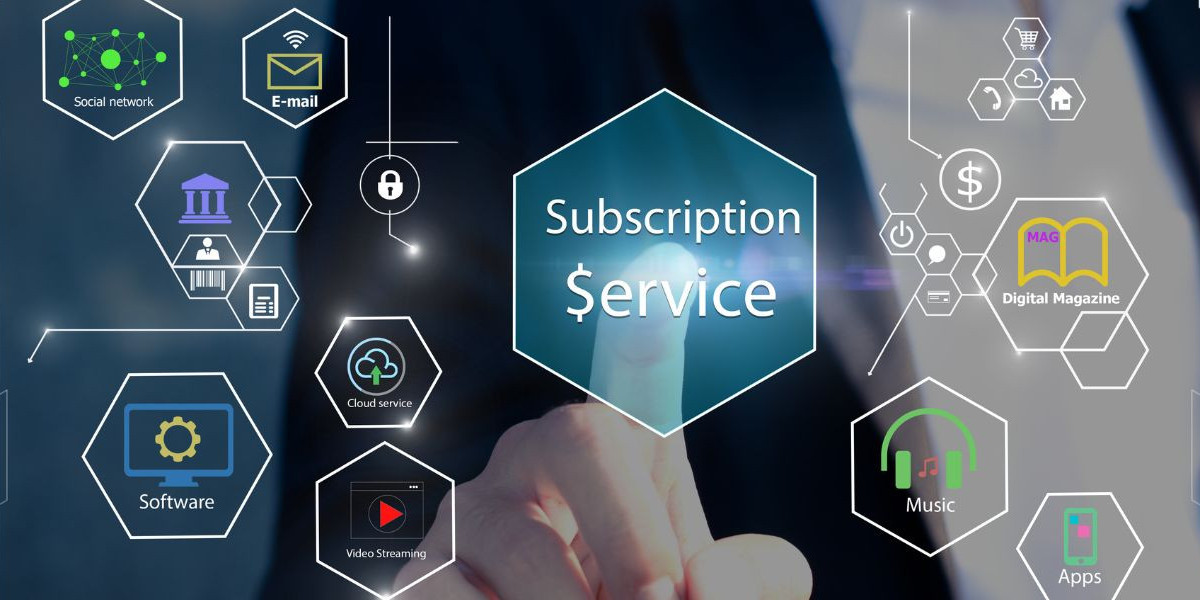Subscription management is all about keeping track of the various subscriptions you have - whether it's for streaming services, software tools, or monthly snack boxes. Have you ever wondered how companies like Netflix or Spotify keep track of millions of subscribers, ensuring they get billed accurately and on time? That's where subscription management comes into play.
How does subscription management work?
Subscription management works like the conductor of a symphony, orchestrating all the moving parts to ensure a smooth and harmonious experience for both businesses and customers. At its core, subscription management involves overseeing the entire lifecycle of a subscription, from sign-up to renewal or cancellation.
Here's a breakdown of how subscription management works:
Customer sign-up: It all starts when a customer decides to subscribe to a service or product. This could be anything from a streaming platform like Netflix to a monthly delivery box of snacks. During the sign-up process, customers provide their payment information and choose their subscription plan.
Account creation: Once the customer signs up, an account is created in the subscription management system. This account contains important details like billing information, subscription preferences, and contact information.
Billing and payment processing: As the subscription progresses, the subscription management system handles the billing process. This includes generating invoices, processing payments, and sending receipts to customers. Depending on the billing cycle (monthly, yearly, etc.), payments are automatically charged to the customer's chosen payment method.
Subscription changes: Customers may want to change their subscriptions over time. This could involve upgrading to a higher-tier plan, adding extra features, or downgrading to a more basic plan. Subscription management systems allow customers to easily make these changes through self-service portals or by contacting customer support.
Renewals and cancellations: When a subscription is nearing its expiration date, the subscription management system sends out renewal reminders to customers. If the customer chooses to renew, the subscription is automatically extended for another billing period. On the other hand, if the customer decides to cancel, the subscription is terminated, and no further charges are incurred.
Customer support and issue resolution: Throughout the subscription lifecycle, customers may encounter issues or have questions about their subscriptions. Subscription management systems often include customer support features, such as ticketing systems or live chat support, to help address these concerns promptly and efficiently.
Analytics and reporting: Finally, subscription management systems provide valuable insights into subscriber behavior and trends. Businesses can analyze churn rates, customer retention, and subscription growth to make informed decisions and optimize their subscription offerings.
In essence, subscription management works behind the scenes to ensure that subscriptions are managed effectively, payments are processed accurately, and customers have a seamless experience from start to finish.
Subscription billing models
Subscription billing models come in various forms, offering flexibility for both businesses and customers. Here's a look at some common subscription billing models:
Monthly subscriptions: This is perhaps the most straightforward billing model, where customers pay a fixed amount each month to access a service or product. Examples include subscription boxes, streaming services like Netflix, and SaaS billing platforms.
Annual subscriptions: Similar to monthly subscriptions, customers pay upfront for a year's worth of access to the service or product. Annual subscriptions often come with discounts or incentives to encourage customers to commit to a longer-term relationship with the business.
Freemium: In this model, the basic version of the service is offered for free, with limited features or functionality. Customers have the option to upgrade to a premium version with additional features by paying a subscription fee. This model is popular among software companies and mobile apps.
Tiered pricing: Businesses offer multiple subscription tiers, each with different levels of features and pricing. Customers can choose the tier that best suits their needs and budget. Tiered pricing allows businesses to cater to a broader range of customers and capture different market segments.
Usage-based billing: Instead of charging a flat fee, this model charges customers based on their usage of the service or product. For example, cloud storage services often use this model, where customers pay based on the amount of data stored or the number of transactions processed.
Perpetual licensing: While not strictly a subscription model, perpetual licensing allows customers to purchase a one-time license to access the product indefinitely. However, businesses often offer maintenance and support subscriptions alongside perpetual licenses to ensure ongoing updates and support.
Pay-as-you-go: Similar to usage-based billing, customers only pay for what they use, with no fixed subscription fee. This model is standard in industries like telecommunications and utilities, where customers pay for services on a usage basis.
Each subscription billing model has its advantages and considerations, depending on the nature of the business and the preferences of both the business and its customers. By choosing a suitable billing model, businesses can optimize revenue streams, attract and retain customers, and adapt to changing market conditions.
Subscription management software: key features to look for
Subscription management software is a game-changer for businesses handling a multitude of subscriptions. Whether running a streaming service or a SaaS platform, choosing the right business management software can make or break your operations. Here are some key features to look for when evaluating different options.
Automated billing: One of the most important features of any subscription management tool is its ability to automate billing processes. Look for software that can handle recurring payments seamlessly, reducing the risk of human error and ensuring timely invoicing.
Customer management: Keeping track of customer accounts is vital for any subscription-based business. Make sure the software offers robust customer management features, allowing you to easily view account details, track usage, and communicate with subscribers.
Flexible pricing plans: Every business has unique needs when it comes to pricing. Look for subscription management software that offers flexibility in setting up different pricing plans, whether it's monthly, annual, or usage-based. This flexibility enables you to cater to a diverse range of customers and adapt to changing market conditions.
Integration capabilities: Seamless integration with other tools and platforms is essential for maximizing efficiency. Choose software that integrates easily with your existing systems, such as accounting software, CRM tools, and payment gateways. This integration streamlines processes and eliminates the need for manual data entry.
Analytics and reporting: To make informed business decisions, you need access to comprehensive analytics and reporting tools. Look for subscription management software that provides detailed insights into subscriber behavior, churn rates, and revenue trends. This data empowers you to optimize your pricing strategies and identify areas for growth.
Security measures: Protecting sensitive customer data should be a top priority for any subscription-based business. Ensure that the software you choose adheres to industry-standard security protocols and offers features like encryption, role-based access controls, and regular security updates.
Scalability: As your business grows, your subscription management needs may evolve. Choose software that can scale with your business, accommodating an increasing number of subscribers, transactions, and features without compromising performance.
Customer support: In the world of subscription management, issues can arise at any time. Look for software vendors that offer responsive customer support, whether it's through email, phone, or live chat. Prompt and helpful support can minimize downtime and keep your operations running smoothly.
By prioritizing these key features, you can find the subscription management software that best meets your business needs and sets you up for success in the subscription economy.
Subscription management vs. recurring billing
Subscription management and recurring billing are two closely related concepts in subscription-based businesses, but they serve distinct purposes and encompass different aspects of managing customer subscriptions.
Subscription management:
Subscription management is a comprehensive process that involves overseeing all aspects of customer subscriptions, from acquisition to renewal. It encompasses tasks such as customer onboarding, account management, billing, and customer support. Essentially, subscription management focuses on the entire lifecycle of a subscription, from initial sign-up to cancellation or renewal.
Key aspects of subscription management include:
Customer relationship management (CRM): Building and maintaining relationships with subscribers through personalized communication and support.
Account management: Managing customer accounts, including updating account information, handling upgrades or downgrades, and addressing account-related issues.
Billing and invoicing: Handling billing processes, including setting up pricing plans, generating invoices, and processing payments.
Churn management: Implementing strategies to reduce churn, such as offering incentives to retain customers or analyzing churn patterns to identify potential issues.
Analytics and reporting: Monitoring critical metrics related to subscriber acquisition, retention, and revenue to inform decision-making and optimize subscription offerings.
Recurring billing:
Recurring billing software , on the other hand, is a specific aspect of subscription management that focuses solely on the automated process of charging customers at regular intervals. It involves setting up billing cycles (e.g., monthly, quarterly, annually) and automatically charging customers for their subscriptions according to their chosen billing frequency.
Critical aspects of recurring billing include:
Automated payment processing: Automatically charging customers' payment methods on a recurring basis, typically using a payment gateway or merchant account.
Invoice generation: Generating invoices or receipts for each billing cycle, detailing the charges and any applicable taxes or fees.
Payment collection: Collecting payments from customers via credit/debit cards, bank transfers, or other accepted payment methods.
Payment notifications: Notifying customers in advance of upcoming payments, ensuring transparency and allowing them to manage their subscriptions effectively.
In summary, while subscription management encompasses a broader range of activities related to managing customer subscriptions, recurring billing specifically refers to the automated process of charging customers at regular intervals. Both are essential components of running a successful subscription-based business, working together to ensure smooth operations and positive customer experiences.
Billing management systems
Billing management systems are the backbone of subscription-based businesses, providing the infrastructure needed to handle all aspects of billing and invoicing. These systems play a crucial role in ensuring accurate and timely billing processes while also enhancing customer satisfaction and streamlining administrative tasks. Here's a closer look at billing management systems and their key components:
Invoicing and billing generation: One of the primary functions of a billing management system is to generate invoices for products or services rendered to customers. These invoices typically include details such as the billing period, charges, taxes, and payment instructions. The system automates the invoicing process, reducing manual errors and saving time for administrative staff.
Recurring billing: Many subscription-based businesses operate on a recurring billing model, where customers are billed automatically at regular intervals (e.g., monthly, quarterly, annually). Billing management systems facilitate this process by scheduling and processing recurring payments, ensuring a steady stream of revenue for the business.
Payment processing: Billing management systems integrate with payment gateways and merchant accounts to facilitate payment processing. Customers can make payments using various methods, including credit/debit cards, bank transfers, and online payment platforms. The system securely processes payments, encrypting sensitive financial information to protect against fraud and data breaches.
Subscription management: In addition to billing, these systems often include features for managing customer subscriptions. This may involve tracking subscription status, managing subscription plans, and handling upgrades, downgrades, or cancellations. Businesses can streamline operations and provide better customer service by centralizing subscription management within the billing system.
Accounting integration: Billing management systems integrate with accounting software to ensure seamless financial reporting and reconciliation. Transaction data is automatically synchronized between the billing system and the accounting software, reducing manual data entry and minimizing the risk of errors. This integration provides a comprehensive view of the business's financial health and facilitates compliance with accounting standards and regulations.
Analytics and reporting: Billing management systems offer robust analytics and reporting capabilities, allowing businesses to track key metrics such as revenue, churn rate, and customer lifetime value. These insights enable informed decision-making and help identify trends or patterns that may impact the business's financial performance. Customizable reports provide stakeholders with real-time visibility into billing activities and financial metrics.
Customer self-service: Many billing management systems include self-service portals or customer portals where customers can view and manage their accounts, access billing statements, update payment methods, and make changes to their subscriptions. Providing customers with self-service options enhances their experience and reduces the workload on customer support teams.
Subscription billing business models
The rise of Software-as-a-Service (SaaS) has transformed the way businesses approach subscription billing. With SaaS subscription management, companies can offer flexible pricing plans, scale their services according to demand, and easily add or remove users as needed. This versatility has made SaaS a popular choice for businesses of all sizes.
Conclusion
In today's subscription-driven economy, effective subscription management is essential for maximizing profits and retaining customers. By investing in the right tools and strategies, businesses can streamline their operations, improve customer satisfaction, and stay ahead of the competition. Whether you're a small startup or a multinational corporation, understanding the intricacies of subscription management can make all the difference in your bottom line.
Billsby revolutionizes subscription management by offering a comprehensive platform that simplifies billing processes for businesses of all sizes. With Billsby, businesses can effortlessly manage subscriptions, automate billing cycles, and streamline payment processing, saving time and resources. Billsby's robust security features ensure the protection of sensitive customer data, fostering trust and compliance with industry regulations. By leveraging Billsby's powerful subscription management tools, businesses can optimize revenue streams, enhance customer satisfaction, and drive long-term success.








